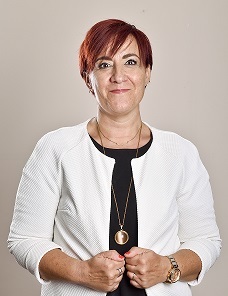The Evolving Role of the Corporate Lawyer
Written by Dr. David Wain, Chief Legal Officer AX Group
A corporate legal office (CLO) can be generally described as the department within a commercial organisation which is vested with the responsibility of overseeing every legal aspect of the business. In the past, this role was generally incorporated within the ‘administrative’ function of an organisation, with specific legal services being farmed out in a reactionary manner. Today, the legal function within the organisation plays a far more critical role than it did in the past, given the greater scrutiny of the business overall and the continuous increase in oversight regulation.
From the perspective of the legal professional eyeing a career as a corporate lawyer, it presents challenges and opportunities for professional growth not normally faced by legal professionals regularly operating within law firms or by practitioners with an array of different clients – and it makes for a very interesting job!
IS A CORPORATE LEGAL OFFICE NECESSARY, OR EVEN DESIRABLE?
Both the local and the global business climates are changing rapidly, and an organisation has to demonstrate the required nimbleness to change strategy as required in order to survive and flourish. The inherent risks triggered by this necessary approach are both reputational and financial nature and are further exacerbated by the growing number of laws, regulations, data security considerations and an array of other matters.
Generally, given the greater scrutiny over business overall and the incessant increase in oversight regulation, one could argue that a corporate legal function is required notwithstanding the size of the business. Due to financial constraints, not all organisations will find an internal employed legal office viable. However, irrespective of whether the resources of an organisation command a ‘full time’ or ‘part-time’ function, it is key, in the context of the developing business reality we are living to be proactive rather than reactive. This has led to an increasing number of local corporations investing directly in legal talent. There is an increasing awareness of the fact that while external counsel may be extremely adept at fixing something once it has already happened, disentangling and solving a problem is generally much tougher and riskier than preventing one.
Enterprise risk management is an increasingly crucial part of the CLO’s role. The CLO must be aware of the potential risks facing the company and make sure appropriate procedures are in place to prevent these risks from arising and to address them in the event they do arise. The immediate and widespread availability of information (and misinformation) in today’s ‘Internet Age’ has increased the velocity with which a company can suffer material reputational and financial harm.
One of the most recent issues to capture the public’s imagination landing on CLO’s lap was the General Data Protection Regulation (GDPR), which entered into force in May of last year. For AX Group, which employs in excess of 1,000 people and comprises around 35 companies, the task towards ensuring compliance was complex and stimulating, with our Legal Office leading the process from the advisory stage all the way through to implementation.
The project started off with an analysis of the relevant legal provisions, following which an analysis of such provisions in the context of the extant procedures within the AX Group was conducted. Following the analysis, Legal Office offered recommendations for compliance, and finally project-managed the implementation of a framework meant to facilitate such compliance.
FROM LEGAL TECHNICIAN TO CORPORATE ADVISOR AND MANAGER
The creation of an internal legal function within an organisation opens up further the possibilities of obtaining value, as it departs from the idea of a lawyer being a ‘legal technician’ to one where he or she is considered as an adviser, who will advise the business when changes are made to the laws and proactively providing legal solutions to business quandaries which increases value. This is besides the more traditional ‘advocacy’ role which was traditionally carried out by external counsel.
Therefore, the legal professional heading a corporate legal office, the Chief Legal Officer or General Counsel (depending on the organisation) should be a strategic business partner on the senior executive team. This requires the development of a set of skills that a legal professional is not necessarily trained for. It will be difficult, if not impossible, for a corporate lawyer to recognise and assess risks to the company and its business if they are not adequately informed about the company’s business, strategies, etc, and do not have a good understanding of the markets within which the organisation operates.
Furthermore, business acumen is critical. The CLO is often expected to wear many hats – that of Company Secretary, Chief Compliance Officer, Chief Privacy Officer, Chief Corporate Adviser, just to name a few. Therefore the robust marriage between legal knowledge and business understanding is crucial to a CLO’s skills set. To acquire credibility in his or her organisation, the corporate lawyer must understand the business, know his or her industry, and be able to provide strategic alternatives and ideas on both legal issues, as well as business issues affected by material legal considerations. Raising awareness and sensitising senior management to legal risks in a fast-paced business environment requires the CLO to be trusted and recognised as a leader within the organisation, being patient and diplomatic, whilst persistent and unwavering whenever required.










